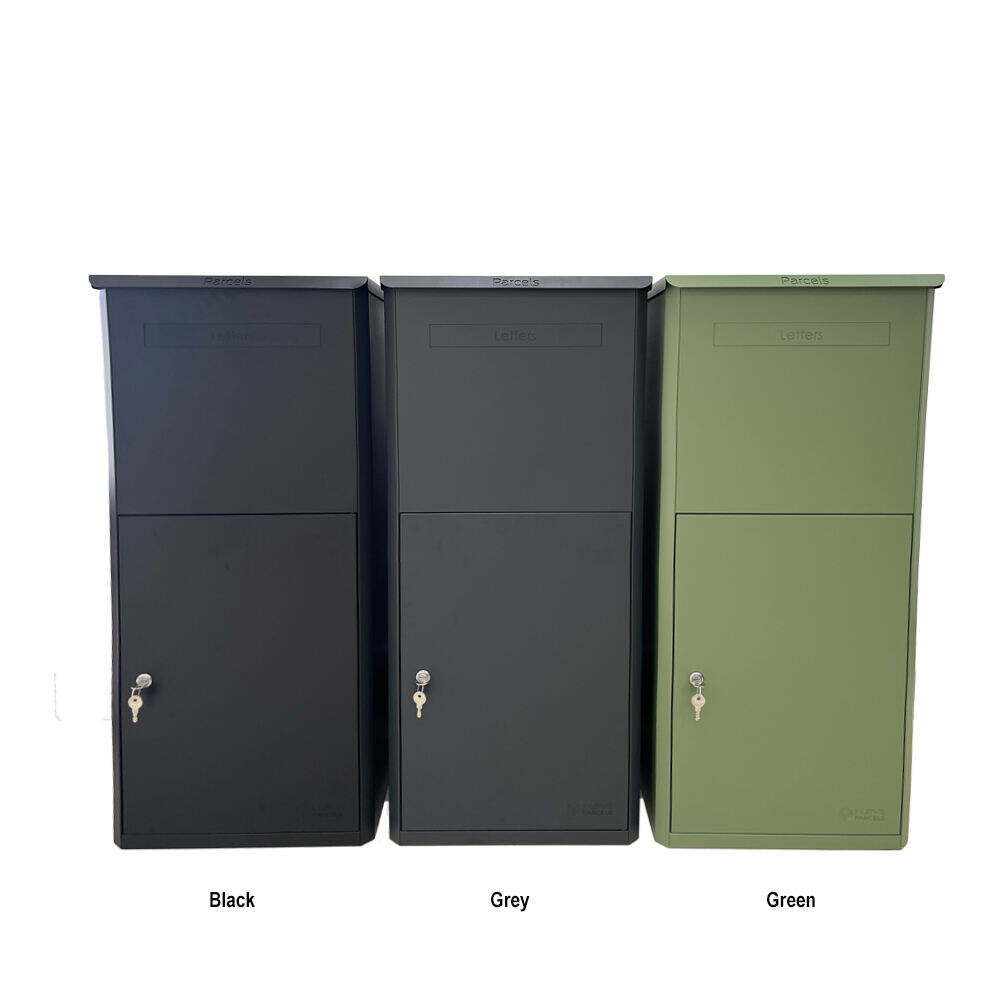There is a unstoppable bang of high-density urban life in life: soaring apartment buildings, boisterous condominiums, and diverse use building. There is energy there that you cannot deny. However, it poses its own special logistical difficulties with no better exemplification than the bombardment of deliveries of parcels on a daily basis. As a consequence to addresses this continual tide of luggage and items, material management that is efficient, secure, and does not entail cluttering up the valuable common spaces is a top priority to property managers, developers, and residents. Here is where large-capacity purpose-built parcel boxes stop being a convenience and become an urban, versatile infrastructure.
The Urban Delivery Dilemma
Consider hundreds of people living in a standalone residential tower. Online retail colossi, food deliveries, subscription boxes, and even individual personal online shopping all produce an unstoppable context of packages. The conventional mailrooms soon end up being overwhelmed and this results in:
1.Chaotic Congestion: Disorganized congestion of hallways, lobbies, management offices with mountains of packages provide an unsafe environment, expose buildings to fire risk, and are not an enjoyable resident experience.
2.Security Vulnerabilities: Leaving parcels unattended in common spaces creates an opportunity to be stolen (porch piracy on steroids).
3.Operational Burden: Employees waste too much time logging, sorting, storing and retrieving packages, compromising the time to perform property management functions.
4.Resident Frustration: The line to get the items, the time of picking them up, misplaced items, or items that were not received are major causes of dissatisfaction among residents as well as worries about items being stolen.
The Large-Capacity Solution: Engineered for Density
Large standard mailboxes or small parcel lockers can just not handle the rhythm and size variety, in contemporary urban deliveries. Big-box parcel boxes specifically own to respond to the level of high-density projects:
1.Scale to Match Demand: These systems have several compartments of much larger size than the usual mail slots. Importantly, each of them provides a considerable number of compartments in which to place any amount of the existing and the oversized parcels (assume groceries, bulk-orders, small furniture or electronics boxes), which cuts the overflow into management regions by a long margin.
2.Enhanced Security Architecture: Constructed of durable materials (heavy-gauge steel, fortified doors), effective electronic or mechanical locking systems and many that come with access control systems, they offer a hardened delivery destination. As soon as the parcels are delivered, each of them is locked into a compartment assigned to the specific resident.
3.24/7 Accessibility: Residents have the flexibility of accessing their packages and parcel lockers at their own convenience through secure forms 24 hours a day (unique codes, keycards, app on mobile phones) without worrying about inconvenient office hours and waiting time. Products/parcels are conveniently left by delivery staff with validated credentials.
4.Space Optimization & Order: With all of the parcel storage brought into a single, small footprint, these units trim the clutter in lobbies and hallways. These are meant to be placed strategically, such as into lobby walls, a central mail room, or even a walled greenhouse in an outdoor vestibule, thus saving the highly valuable common area real estate to the residents to enjoy.
5.Operational Efficiency: Appreciably shortens the time and staff needed by property personnel to handle packages. Last-mile mitigation means that delivery personnel can place the items within the building fast and securely without having to interact directly with the staff, in turn, simplifying the entire last-mile process.
Key Considerations for Urban Integration
Making decision on the appropriate large-capacity solution should be well thought:
- Volume Assessment: For accurate determination of current and future parcel volume based on current unit count, resident demographics, and e-commerce trends to inform the number and size mix of compartment choices.
- Footprint & Placement: Critically assess available room. The type of solutions can be presented as wall-mounted banks as well as freestanding kiosks or even modular solutions which can be reconfigured. Give preference to the movement of residents and couriers providing services.
- Durability & Longevity: A city or urban setting will require an industrial-strength construction that withstands high traffic, possible vandalism, and variable weather conditions in case it is positioned outside or in a semi-exclusivity environment.
- Access Control Integration: The smooth integration with current external building access systems (fobs, intercoms) is security-enhancing and convenient to the residents. Cloud management portal is a helpful supervision of personnel.
- User Experience: Focus on easy to use interfaces on the delivery person (quick deposit) and the resident (easy release). It is unacceptable to have unclear guidance and stable functioning.
Beyond Convenience: An Urban Necessity
Using large-capacity parcel boxes in high-density development is more than staying with a trend; it is about future-proofing the property. They go straight to the causes of pain:
- Elevating Resident Satisfaction: Free secure, convenient, 24/7 package access is an amenity that Residents greatly appreciate and greatly increases Resident satisfaction and retention.
- Enhancing Security: By doing away with package thefts and minimized unattended parcels in community areas, increased security would be experienced.
- Optimizing Operations: Staff no longer need to worry about package management, which means they can spend their energies on other resident service and property maintenance at higher value.
- Protecting Property Value & Aesthetics: The benefits of keeping common areas clean and professionally handled will be felt throughout and extend to the perceived value of the development.
- Supporting Sustainable Urban Growth: Optimized package handling is also part and parcel of ensuring high-density living becoming viable, not to mention desirable and efficient, as cities expand into the sky.
Conclusion
Water or electricity are essential, but efficient flow of goods is also prerequisite in the concrete jungles of high density urban life. Bulk parcel boxes are an innovative, useful and indispensable answer to the tricky task of e-fulfillment at scale. Incorporating these powerful systems, not only are developers and property managers betting on package management systems, they are also betting on easier to run operations, more safety and security, a better living environment to residents, and the overall survival and desirability of dense urban neighborhoods. They become a foundational aspect toward constructing smarter, more resilient, and habitable cities of the future.


